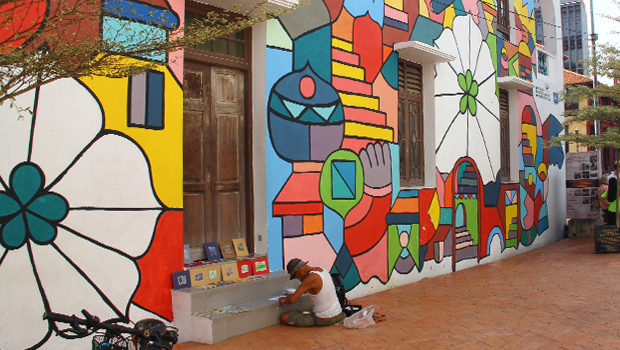
Melaka Heritage Trail
Words by Harny Abu Bakar
Melaka, despite just a small state, is packed with a colourful long history. Founded by a prince from Palembang in the 14th Century, Melaka flourished as an international port where traders from all over the world came to trade spices which were abundant in the Malay Archipelago.
According to the Malay Annals, the prince, Parameswara contemplated to establish a new kingdom and according to the popular legend, while resting under a tree near the mouth of Bertam River (former name of the Melaka River), the prince witnessed a mouse deer outwitting his dog.
Parameswara took what he witnessed as a good omen and decided to build a kingdom called Malacca and which he made all facilities for Malacca to become an international port for trading. Malacca flourished as a popular port because of its strategic location and Parameswara who took the name as Sultan Iskandar Shah forged good relationship with China and the bond later strengthen when China sent a princess Hang Li Po to marry Sultan Mansur (1456-1477) and she brought with her some 500 youths from noble families.
However, administration and economics problems sealed the downfall of the Melaka sultanate and in 1511, Portuguese armada led by Alfonso de Alburquerque, finally conquered the port. Then in 1606, came the Dutch where they launched several attacks on the Portuguese colony.
Later, in 1824, Melaka was ceded to the British in the Anglo-Dutch Treaty of 1824, where Melaka was under the rule of British East India Company and then later as a Crown Colony.
This colourful history is what makes Melaka very unique. The descendants of Hang Li Po’s entourage who married the local women, is now known as Chinese Peranakan or Baba Nyonya. Although they may retain their religion, most of their lifestyles including cuisines are a mixed of Chinese and Malay.

A Famosa fort
Other historical remnants such as the Dutch Square, the A Famosa fort, the Stadhuys Building and St Paul’s Church are still proudly standing to share their stories with visitors to this UNESCO World Heritage Site.
For visitors who are on limited time and would still want to get a crash history lesson about Melaka history, they can book a Heritage Tour for a two-and-half hour walk along the historical landmarks in the old city.
The walk will start at the Tourist Information Centre at Jalan Kota at 9.30am. With an experienced guide like Desmond Lau, visitors will be brought to visit these historical landmarks and listen to the story behind it, such as why the Stadhuys Building is painted with maroon colour and how the statue of St Francis Xavier had lost its right wrist.

Visitors reading the inscriptions on the tombstone in Christ’s church
The St Paul’s Church was once a prayer house for the Portuguese Catholics and later turned into burial ground for their noble dead by the Dutch. What is interesting here, the tombstones have Latin and Portuguese inscriptions on them. St Francis Xavier was buried here in 1553 before his remains were transferred to Goa, India.
While on the walk, visitors can also bask in the beautiful landscape of the old and the new city. The best place to enjoy the view is at the St Paul’s hill.
Coming down from the hill, visitors are brought to Jonker Street, once the richman’s street. Not just it showcasing beautiful buildings with elaborate carvings on their pillars and walls, the street is also famous for local antique shops, restaurants and modern shopping boutiques.

Dutch Square

Souvenirs Stalls

Jonker Street
The tour will end at two religious building, the Kampung Keling Mosque, one of the oldest in the country (built in the 17th Century) with a blend of Sumatran and Western architecture and Cheng Hoon Teng temple, constructed in 1645 and believed to be the oldest Chinese temple in the country.
Those who are interested to book a free guided heritage tour can contact the Melaka Tourism Information Centre at 606-281 4803. The centre is located at Jalan Kota (near the Tan Kim Seng Bridge that connects Jalan Laksamana and Lorong Hang Jebat).



 Previous Article
Previous Article Next Article
Next Article